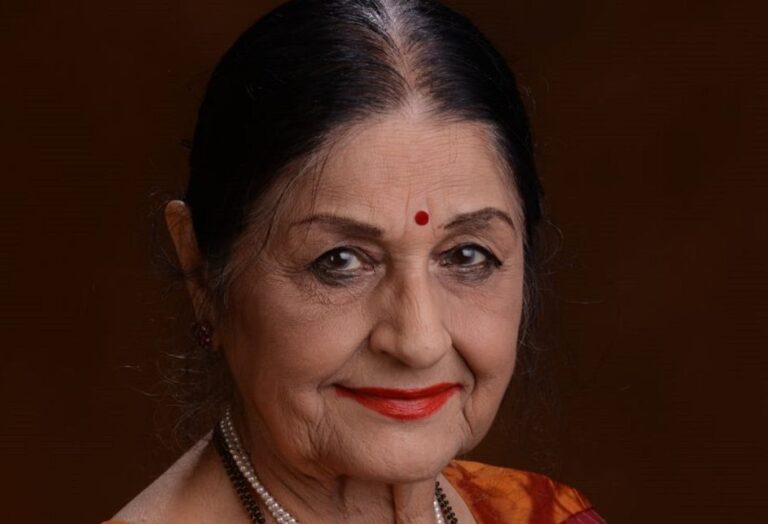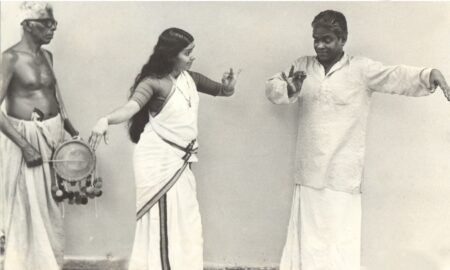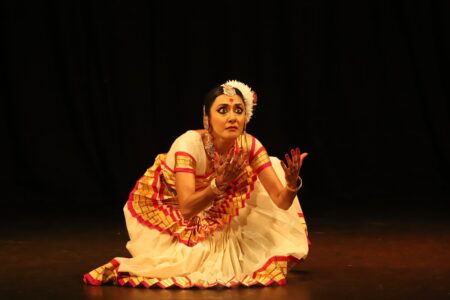A scholar of repute, Guru Kanak Rele’s role in popularising Mohiniyattam has been singular. She shaped her own unique brand of the lyrical dance form through meticulous research and dedication
Dr Kanak Rele turns 84 today. One wonders whether Mohiniyattam, the lyrical dance of Kerala origin, would have attained the popularity it enjoys today but for the contributions of this avant-garde researcher, performer, choreographer and Guru. And they have fetched her innumerable awards and titles including Padma Bhushan and Padma Shri. Sangeeth Nataka Akademi Award, Kalidas Samman and Kulapati of Mohiniyattam from Kalakshetra, Chennai have been other accolades. Small wonder, she was selected by the government of Kerala for the first Guru Gopinath National Puraskaram in 2019.
Over the past four decades of my association with her, I have often wondered whether Martha Graham had Kanak Rele in her mind when she observed, “Great dancers are great because of their passion”.
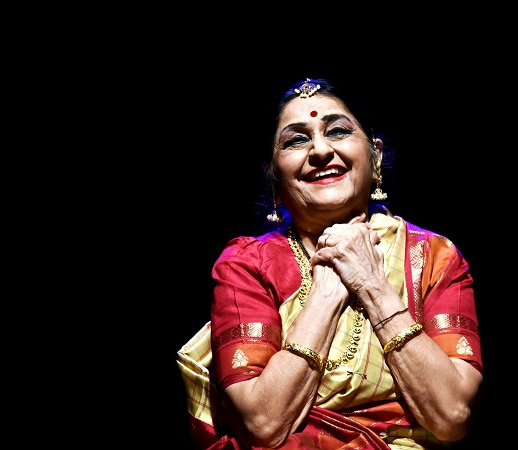
As a child staying with her uncle in Santinikethan, Kolkata, she could watch both Kathakali and Mohiniyattam from close quarters. Perhaps this might have triggered the terpsichorean spark innate in her. This resulted in bringing Guru Karunakara Panicker home to teach her Kathakali at the age of seven. Perhaps it served as an introduction to the Kerala art forms of which she was to become an authority later.
Option for different academic disciplines other than dance was an alibi. The same passion compelled her to not join the MBBS course even after the fee was paid. Then, Industrial Law followed by International Law in Manchester University, the UK with specialization in Civil Aviation, back home offer of a lucrative job in Air India during its incipient stages, that was rejected by her against the wishes of her parents – all could be imputed to her passion to become a professional dancer. Interestingly, Guru Karunakara Panicker continued to train her even after she returned from the UK. And he was successful in moulding her into a consummate Kathakali performer.
Fierce passion
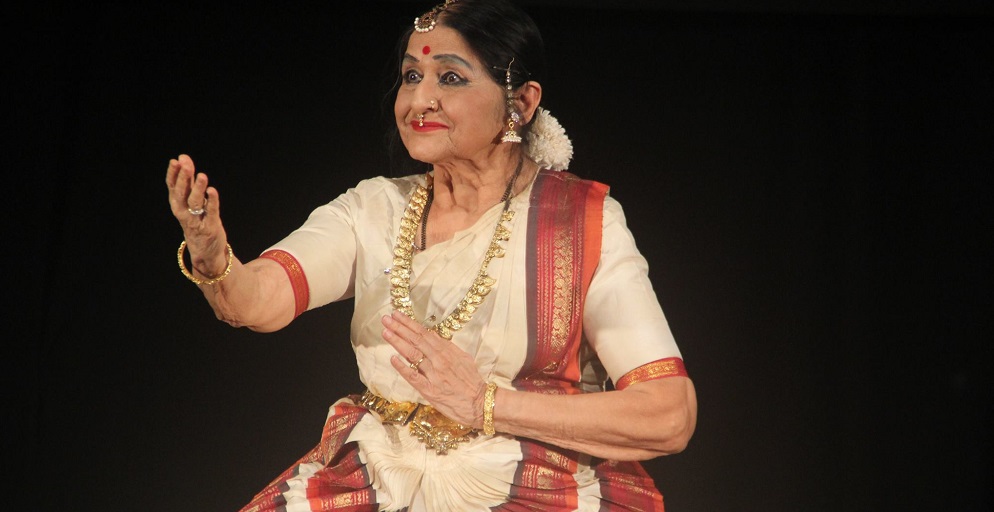
Kalamandalam Rajalakshmi’s presence in Mumbai during those days was providential. Rajalakshmi familiarized her with the style of Mohiniyattam that was evolved in Kalamandalam where it was revived by Poet Vallathol Narayana Menon during the 1930s. The extremely lasya-rich lyrical dance form whetted Kanak’s passion further. A study grant from Sangeet Natak Akademi at this juncture was a blessing as it enabled her to meet the surviving performers and scholars including members of the Vallathol family, who could enlighten her about the evolutionary stages of Mohiniyattam.
Her pursuit received further impetus thanks to a grant from the Ford Foundation. She met the surviving exponents like Kalpurathe Kunjukutty Amma, Thottassery Chinnammu Amma and Kalamandalam Kalyanikutty Amma and filmed them. Incidentally, the recording is a priced possession in the archives of her institution in Mumbai even now. An in-depth analysis of the patterns of their dance could establish the correlation of the folk, ritualistic, semi-classical and classical arts of Kerala.
Kanak’s extensive research that bore rare fruits later began from here. As early as 1967, she had founded Nalanda Dance Research Centre which was recognised as a Scientific and Industrial Research Organisation by the Ministry of Science and Technology of the Government of India, perhaps the only one of its kind. That she had already won national acclaim during those days, was evident from the invitation from Kerala Kalamandalam to participate in the first-ever seminar on Mohiniyattam held in 1968. Other dancers included Mrinalini Sarabhai, Kalamandalam Kalyanikutty Amma and Guru Gopinath. This was in addition to a posse of scholars from across the country and even from abroad.
Kanak Rele school of Mohiniyattam
Intensive research on the kinetics of the dancer, based on the movements of Volution (geometrical patterns) and Revolution (spiral) so characteristic of Indian classical dances and an analysis of the audio and film documentations against the backdrop of Natyasastra, Hasthalakshanadeepika and Balaramabharatham gave shape to the ‘Kanak Rele School’ of Mohiniyattam. Incidentally, Kanak Rele was the first Mohiniyattam researcher to identify Karthika Thirunal Bala Rama Varma’s work of the 18th century, Balaramabharatham, which could shed much light on the indigenous intricacies of Kerala dances. The book has been described as the Natyasastra of Kerala.

The ‘Kine-aesthetics’ was propounded taking advice from experts belonging to all disciplines including medical science. The monumental work further fetched her PhD from the University of Mumbai. While she had dwelt at length on the prayoga of the dance form in the first edition of the book ‘Mohini Attam – The Lyrical Dance’ (1992), she has been successful in building up a sastra in the revised edition (2013) which is logically and aesthetically perfect.
The other work ‘Bhava Niroopana’ (1996) is a comprehensive account of the theoretical basis of abhinaya and it further traces the development of our religious thought and its influence on aesthetics. Small wonder, the two books are followed in institutions all over the country including Kerala Kalamandalam Deemed to be University for the undergraduate and post-graduate classes.
Apostle of Sopanam style

In an interview after the release of the revised edition of her book ‘‘Mohini Attam – The Lyrical Dance”, she argued that Sopana sangeetham was most suitable for Mohiniyattam. For, the most important characteristic of Sopana sangeetham is the element of andolika (oscillating) movement of music. She explained, “In the initial stages of my work in Mohiniyattam, I also used the Carnatic musical pieces with their swara-sahithya pattern and crisply recited chollus (mnemonics). But I experienced many rough edges with sudden jerkiness in the dancing which was not intentional but was prompted by the music and tala system.
In many instances, the intense emotionalism that was required from a Mohiniyattam exponent could not be taken to its logical fruition due to a lack of support from the music. It is only when I started working with Sopana Sangeetham that things arranged themselves in the proper shapes and hues. The very basic movement that sustains Mohiniyattam dancing is andolika or the oscillating movement. These kinetic patterns are beautifully aided by the gamakas of Sopana Sangeetham which strengthen and beautify the oscillating body”. In this connection, association with Kavalam Narayana Panicker since 1982 has been a blessing.
An ace choreographer, all her works have been anchored on Sopana ragas and talas. She has to her credit seven categories of repertoire: 1. Invocation (7), 2. Nritta (8), 3.Padam (14), 4. Ashtapady (6), 5.Chitrakavya (4), 6. Nirampadal (6) and 7. Sloka (6). Admittedly many of them are compositions of Kavalam Narayana Panicker including the music. Also, there is a series of choreographies on the legendary women which are thirteen in number.
Perhaps what may remain as another monumental contribution to the academic studies of dance are her pursuits to affiliate Nalanda Nritya Kala Mahavidyalaya to the University of Mumbai thereby becoming the first institution to award Bachelor of Fine Arts, Master of Fine Arts and PhD in Mohiniyattam.

